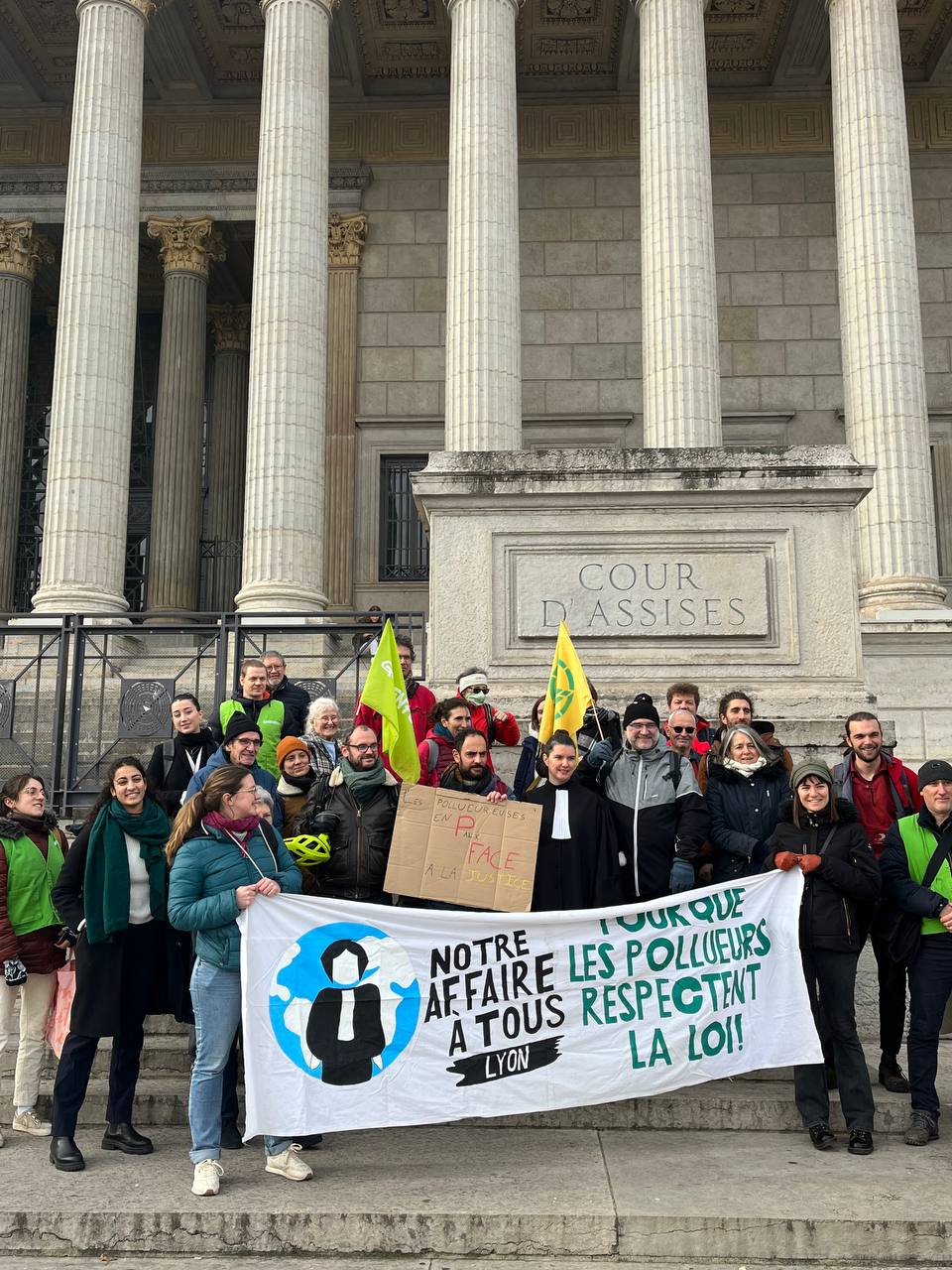Due to widespread use and highly mobile nature, PFAS are in our water, food, homes, and nearly all our bodies. It is estimated that some 23,000 sites are contaminated by PFAS around Europe and that 12,5 million Europeans are living in communities with drinking water polluted with PFAS.
How PFAS pollution
affects people’s health
across Europe
A campaign by the Health and Environment Alliance (HEAL) to
shed light on the real-life consequences of PFAS pollution.
Short for per- and polyfluoroalkyl substances, PFAS are also called “forever chemicals” because they can take up to 1,000 years to break down in the environment while some do not break down at all.
Due to widespread use and highly mobile nature, PFAS are in our water, food, homes, and nearly all our bodies. It is estimated that some 23,000 sites are contaminated by forever chemicals around Europe and that 12,5 million Europeans are living in communities with drinking water polluted with PFAS.
Increasing scientific evidence has linked exposure to PFAS to a number of serious health impacts such as different types of cancer, thyroid disease, immune dysfunction and hormone disruption.
Recent studies also found that PFAS exposure may increase risks of being infected with and could worsen symptoms related to COVID-19.
PFAS pollution is creating a huge financial and health burden on our society. The cost of environmental remediation has been estimated to be between 821 million to 170 billion Euros for all 31 EEA countries and Switzerland combined. But local municipalities and individual families, instead of the actual polluters, are paying the price.
Examples of
community action on PFAS pollution

The Miteni chemical plant contaminated the drinking water of over 350,000 residents with PFOA.
Find out more
Back

3M contaminated the air, soil, and blood of people living near the chemical plant with PFOS.
Find out more
Back

Dupont/Chemours contaminated the air and water of 750,000 people with PFOA and GenX.
Find out more
Back

A fire-fighting training facility contaminated farming land and cattle with PFOS and PFHxS.
Find out more
Back

Fire-fighting foams from a military airport contaminated the drinking water and blood of local residents with several PFAS.
Find out more
Back

Over 200,000 people living in the “Chemical Valley”, recognised as France’s most PFAS-polluted site to date, may have been exposed to harmful forever chemicals.
Find out more
Back

Veneto, Italy
The Miteni chemical plant contaminated the drinking water of over 350,000 residents with PFOA.
Key Information
In a biomonitoring study of 18,122 exposed residents, PFOA showed the highest levels (max 1,400 ng/ml) followed by PFOS and PFHxS.
Over 350,000 residents in Veneto are estimated to have been exposed to the contamination through tap water.
Antwerp, Belgium
3M contaminated the air, soil, and blood of people living near the chemical plant with PFOS.
Key Information
As early as 2001, 3M measured PFOS levels up to 257,000 micrograms per liter in groundwater around the factory.
In 2021, the Flemish Care and Health Agency found excessive PFOS levels in the blood of more than half of the 800 citizens tested.


Dordrecht, the Netherlands
Dupont/Chemours contaminated the air and water of 750,000 people with PFOA and GenX.
Key Information
It is estimated that 750,000 people were exposed to high levels of PFOA from the Dordrecht plant.
People were recommended not to eat vegetables or fruit coming from vegetable gardens within a radius of 1 km from the Chemours factory.
Ronneby, Sweden
Fire-fighting foam from a military airport contaminated the drinking water and blood of local residents with several PFAS.
Key Information
Levels of PFHxS, PFOA and PFOS were up to 100–300 times higher than in Kärragården, another municipality where levels were measured.
In a 2021 study of 3,297 Ronneby residents and 226 non-residents, serum levels of PFHxS, PFOS and PFOA were 114, 135 and 6.8 ng/mL for residents, which was 135, 35 and 4.5 times higher than for the reference group.


Korsør, Denmark
A fire-fighting training facility contaminated farming land and cattle with PFOS and PFHxS.
Key Information
PFOS was found near the firefighting training facility in a drainage channel (up to 9000 ng/l), the surrounding grass (up to 165 ng/g) and soil.
Approximately two-thirds of the participants studied within the cow grazer association had elevated PFOS (up to 553 ng/ml) and PFHxS (up to 38 ng/ml) compared to the Danish normal range.
Lyon, France
Over 200,000 people living in the “Chemical Valley”, recognised as France’s most PFAS-polluted site to date, may have been exposed to harmful forever chemicals.
Key Information
Civil society groups and victims living near France’s “Chemical Valley” have launched legal proceedings against a local chemical manufacturer, following revelations that 3.5 tonnes of PFAS were released into the Rhône river annually for the past 12 years.
Biomonitoring tests showed high levels of PFAS in the blood and breast milk of people living in the contaminated area.

The facts and figures behind PFAS pollution:
Short for per- and polyfluoroalkyl substances, PFAS are also called “forever chemicals” because they can take up to 1,000 years to break down in the environment while some do not break down at all. These chemicals can be found in non-stick frying pans, food packaging, cosmetics, pesticides, waterproof clothing, and many other products you may be using on a daily basis.
Our demands for
EU and national
policy makers
PFAS contamination is one of the biggest health and environment threats in Europe today, which can only be addressed by an EU-wide ban of all PFAS across all uses.
Rationale: While some of the most notorious members of the PFAS family such as PFOA and PFBS have been identified as substances of very high concern by the European Chemicals Agency, the majority of PFAS chemicals are left unchecked.
Together with over 100 other civil society organisations, HEAL is calling on the European Commission and governments to #BanPFAS, by:
- Phasing out all PFAS in consumer products by 2025
- Completely phasing out all PFAS production and uses by 2030
Europe’s legislative system for registering and restricting chemical substances, REACH, is riddled with many deficiencies, red tape and a lack of industry accountability. Chemicals are assessed one at a time, and quickly replaced by industry with similarly harmful substances when it’s apparent a restriction or ban is on the horizon. In fact, a recent report from the European Environmental Bureau found that it normally takes officials up to 13 years and 8 months to assess hazards of a single chemical substance.
In February 2023, the EU Chemicals Agency (ECHA) published the draft proposal for an EU-wide restriction on the production and uses of thousands of PFAS. As this restriction develops over the next year, it will be crucial that EU member states constructively work together to make it a comprehensive and enforceable tool for health and environmental protection against PFAS chemicals.
Take action
Exposure to PFAS constitutes a global threat to our health and the environment.
Here is a list of things you can do to get informed and take action.
FAQs
Short for per- and polyfluoroalkyl substances, PFAS are a family of thousands of chemicals. PFAS are used in a wide variety of consumer products due to their water and stain repellency as well as numerous other properties, and can be found in non-stick frying pans, food packaging, cosmetics, pesticides, waterproof clothing, and many other products you may be using on a daily basis.
PFAS are very persistent chemicals, accumulating in our bodies and adding to our total exposure to chemicals. They are also known to accumulate and persist in our environment, with the ability for long-range transport far from their original emission points.
Often referred to as “forever chemicals”, PFAS can take up to 1,000 years to break down in the environment and some don’t break down at all.
PFAS are known for their water and stain-repellent properties and as a result, are used in a wide variety of consumer products such as food packaging, cosmetics, non-stick frying pans, and waterproof clothing as well as a variety of industrial manufacturing processes.
In recent years, an alarming and increasing number of cases of PFAS contamination have come to light. In Europe alone, The Nordic Council of Ministers estimated that about 100,000 sites are potentially emitting dangerous PFAS chemicals, polluting our health and the local environment.
Due to widespread use and highly mobile nature, PFAS are in our water, food, homes, and nearly all our bodies. These so-called forever chemicals have been detected in air, soil, drinking water, plants and animals across Europe.
Exposure to PFAS has been linked to kidney and testicular cancer, high blood pressure and pre-eclampsia, thyroid disease, liver damage, lower birth weight and size, immune effects, and hormone disruption. Estimations show that the annual health costs related to PFAS range between 52 – 84 billion Euros for Europe alone.
Many of the most-studied PFAS persist in human tissues for years and can take decades to exit the body. PFAS cross the placenta, are detected in cord serum, and can be transmitted to newborns and infants via contaminated breast milk.
Vulnerable groups such as workers, young children, people who are pregnant, breastfeeding or wishing to become pregnant, immunocompromised people, and the elderly are especially at risk.
Increasing scientific evidence about PFAS has linked exposure to these chemicals to a number of serious health impacts such as different types of cancer, thyroid disease and hormone disruption.
PFAS are called forever chemicals because they do not degrade in the environment, rather continuously accumulate as their production continues. Due to their widespread use and highly mobile nature, PFAS are now found everywhere in our water, food homes, and nearly all our bodies.
PFAS pollution creates a huge financial and health burden on our society. It is estimated that more than 17,000 sites are contaminated by PFAS and that the annual health costs related to PFAS range between 52 – 84 billion Euros for Europe alone. But individuals, local communities and authorities, instead of the actual polluters, are paying the price.
The science is clear that nearly everyone is continuously exposed to rising numbers of PFAS. PFAS are ubiquitous in our environment, making them very difficult to avoid.
There are however a few ways you can reduce your exposure to PFAS, including but not limited to:
- Avoid water-, grease- and stain-resistant products, including water-proof clothing, stain-resistant carpet, and grease-proof food packaging (such as fast-food packaging).
- Replace non-stick cookware with safer alternatives, such as cast iron and stainless steel.
- Beware of “PFOS/PFOA-free” product labels. Choose in favour of the broader, more protective “PFAS-free” label instead.
However, the only way to truly address PFAS contamination is through an EU-wide ban of all PFAS across all uses. Visit our ‘take action’ page to find out how you can get in touch with your national and European representatives to voice your concerns.
Get in Touch
You can find out more about our work on PFAS by visiting HEAL’s PFAS campaign page. Use this contact form if you would like to share information about PFAS pollution in your community, or in case you have any other questions.







